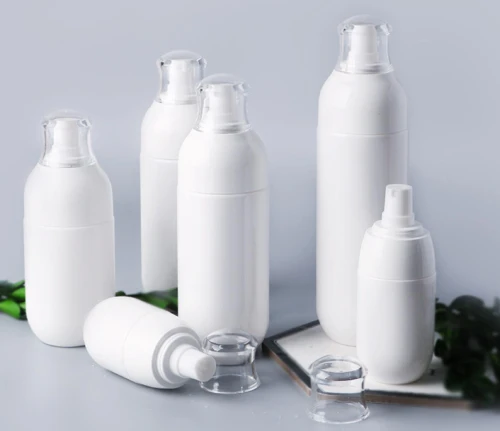What is the difference between PETG and PET?
PETG is a raw material modified from PET, which is more environmentally friendly than PET, has better plasticity, lower melting grease and higher transparency. It can replace acrylic and glass for high-end cosmetics.

1. Different definitions
PETG is a transparent, non-crystalline copolyester. The commonly used comonomer for PETG is 1,4-cyclohexanedimethanol, the full name of which is polyethylene terephthalate-1,4-cyclohexane Dimethoxide.
PET plastics are polyethylene terephthalate plastics, mainly including polyethylene terephthalate PET and polybutylene terephthalate PBT.
2. Different uses
PETG is used in all kinds of long-lasting daily necessities, such as cosmetic bottles, perfume bottles, pharmaceutical packaging containers and so on. Household utensils such as PETG cups, PETG salad bowls, PETG salt shakers, PETG pepper shakers and some other injection products.

PET is mainly used in the packaging of various beverage containers, such as mineral water bottles and beverage bottles. There are also various blister packaging products, such as PET blister trays, PET blister boxes, etc.
PET is used in food, alcohol and detergents. Demand for PET in uncarbonated beverages and industrial product packaging is expected to continue to grow. Packaged foods include mustard, gum products, peanut butter, condiments, cooking oils, cocktails and fruit juice concentrates. New colors, especially Weber-colored PET, are very popular in the packaging of medicines, vitamins and cleaning agents.

3. Different features
PETG sheets are easy to produce products with complex shapes and large stretch ratios. Also, unlike PC board and impact-modified acrylic, this board does not require pre-drying prior to thermoforming. Compared with PC board or acrylic, its molding cycle is short, the temperature is low, and the yield is higher.
The molecular structure of PET plastic is highly symmetrical and has certain crystal orientation ability, so it has high film-forming and forming properties. PET plastic has good optical properties and weather resistance, and amorphous PET plastic has good optical transparency.
Compared with PET, the biggest feature of PETG is that PETG conforms to the concept of environmental protection and food FDA certification. Now, its use as a packaging material is increasing, not only in soda drink bottles, but also in amorphous PET (APET) and crystalline PET (CPET) cans and dishes. Over the past five years, engineering-grade PET and copolyester, as new polymer products, have been used in engineered and specialty packaging materials, respectively.
Features of PETG material:
1. It has excellent transparency and smoothness, and has a good display effect.
2. Excellent surface decoration performance, can be printed without surface treatment, easy to emboss patterns, easy to metal treatment (vacuum metal plating).
3. Has good mechanical strength.
4. Good barrier properties to oxygen and water vapor.
5. Good chemical resistance, can withstand the erosion of various chemical substances.
6. Non-toxic, reliable hygienic performance, good adaptability to environmental protection, and can be recycled economically and conveniently; no environmentally harmful substances are produced when the waste is incinerated.
Features of PET material:
1. The heat distortion temperature and long-term use temperature of PET are the highest among thermoplastic general engineering plastics.
2. Because of the high heat resistance of PET, the reinforced PET material is immersed in a solder bath at 250 ° C for 10S, and it is hardly deformed or discolored.
3. The bending strength of PET material is 200MPa, the elastic modulus is 4000MPa, the creep resistance and fatigue resistance of PET are also very good, the surface hardness is high, and the mechanical properties of PET are similar to those of thermosetting plastics.
4. Since the ethylene glycol used in the production of PET is almost half the price of butanediol used in the production of PBT, PET is the lowest price among engineering plastics and has a high cost performance.
Relative News
- Application and unique advantages of light blocki…
- PULIXIN sincerely invites you to visit 2025Chinap…
- Today’s shipment – 20 tons of anti-fr…
- Customer Case: Successful Application of Anti-fre…
- How does the impact resistance of HIPS plastic sh…
- How to choose the appropriate HIPS sheet thicknes…
- Application Cases of PS Plastic Sheets in Thermof…
- Today’s shipment: Antistatic PP plastic she…
- Application Case of Antistatic PP Plastic Sheet &…
- Today’s delivery: 20 tons of PET plastic sh…
